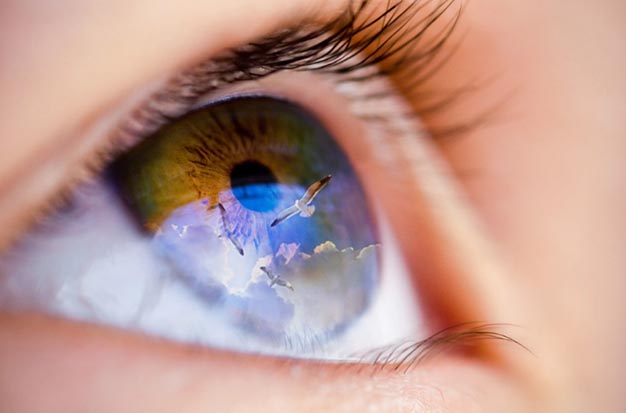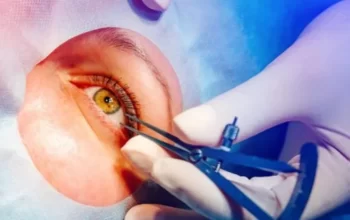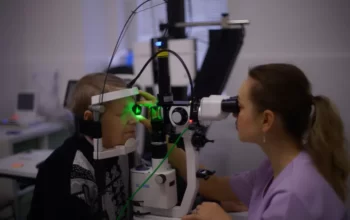
Airplane cabins are pressurized to make sure passengers and crew members can get enough oxygen. If you recently underwent cataract surgery, you might be worried about how this pressure might affect your eyes or your healing process.
The good news is that after cataract surgery, flying is completely safe. There shouldn’t be any eye damage from the pressure in the airplane. If you are concerned that you will experience dry eyes while flying, you might want to pack some eye drops.
What Is Cataract Surgery
The anesthetic medication we use to numb the eye as well as the IV sedative medication that is used should make patients comfortable throughout the surgery. Afterward, during the healing process, there shouldn’t be any pain. However, a lot of patients do experience a mild foreign body sensation, similar to having something in their eye. This was probably brought on by the procedure, and it usually gets better after a day or two. We worry that there might be a serious issue with the eye after the procedure if the pain is worse than this or if it intensifies.
Can I Fly After Cataract Surgery?
Flying will mostly likely make your eyes dry. The atmosphere inside an airplane is incredibly dry and will quickly dry out your eyes; however, the altitude has no effect on your eyes. You should pack lubricating eye drops in your hand luggage because, after RLE surgery, your eyes are likely to be more sensitive than usual. This will help keep your eyes from drying out and will increase comfort if necessary.
Even right away after a typical cataract procedure, flying would not be a problem. Flying is acceptable once your doctor has given you the all-clear to resume normal activities. Simply don’t forget about your follow-up appointments.
Patients may not be able to fly after retina surgery if an air or gas bubble is inserted in the back of the eye. Flying is not specifically prohibited after cataract surgery, but I do prefer that my patients be in the area or available for the first week following eye surgery. If there is a postoperative problem or a serious infection in the eye (endophthalmitis) it usually occurs in the first few days after surgery. Around that time, I prefer that my patients are nearby so we can take a look at them if there are any issues. Despite the fact that they are technically capable of flight, I prefer to keep them close to us.

Can I Fly After Surgery To Repair My Retina
When your doctor says it’s safe for you to fly after having your retina repaired, you should only do so. To repair a detached or torn retina, the ophthalmologist often has to inject a gas bubble to hold the retina in place while it heals. A gas bubble in the eye can expand dangerously if the patient flies, goes scuba diving, or undergoes any other major air pressure change. Blindness may result if the gas expands inside the eye, which can result in severe injury.
As long as the gas bubble is present, you should continue to be at or near the altitude of your surgery. Unlike a gas bubble, there are generally no restrictions for flying with a silicone oil bubble
What You Can’t Do After Cataract Surgery
How soon they will be able to drive after the procedure is one thing that many people are curious to know. You can get behind the wheel again once your vision has stabilized and any light sensitivity has subsided, but you can’t drive yourself home afterward. This could happen as soon as 24 hours after surgery in some circumstances. While many cataract procedures only require local anesthesia, if you do need a general anesthetic (and are thus put to sleep), you will need to wait until the medications are completely out of your system before you can get behind the wheel.
It’s important to know that not everyone feels safe driving this quickly. The recommendations of your surgeon should therefore be fully considered when making decisions in each case.
In the days following cataract surgery, you should avoid engaging in any other types of travel, particularly:
- Anything that causes excessive forces to the eye—this would include riding in sports or supercar at speed
- Jogging or running
- Swim or enter the water
- Travel anywhere that you’re likely to get grit or dust in the eye
Conclusion
Obviously long-haul flights are far worse than short-haul as your eyes are exposed to the dryer atmosphere for longer but the advice for both is the same – take your lubricant eye drops and seek the advice of your treating surgeon before booking your tickets!
It is important to bear in mind that part of your post-surgery care is for you to attend your follow-up appointments. After surgery, you have your initial appointment one to three weeks later. Following the initial follow-up appointment, the second appointment, if necessary, is typically scheduled for 1-3 months later.
When scheduling your surgery and follow-up appointments, we will work with you to make travel arrangements that will work for you. However, we do ask that you attend the initial appointment before flying.



